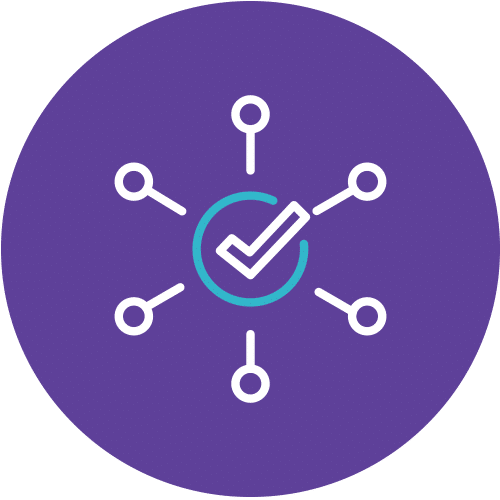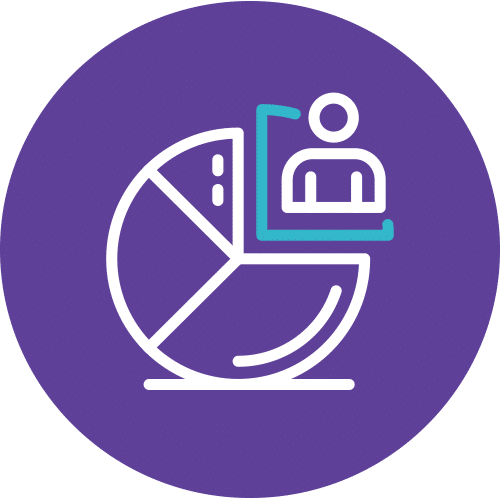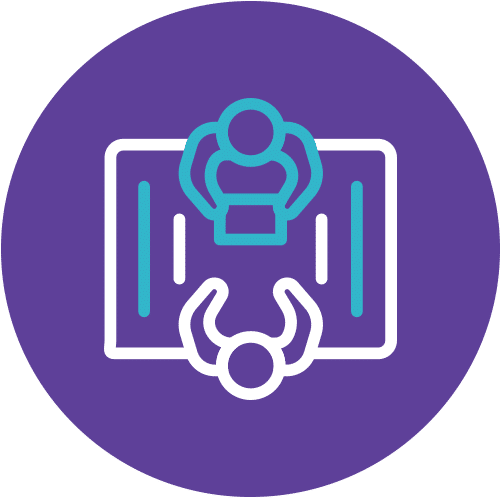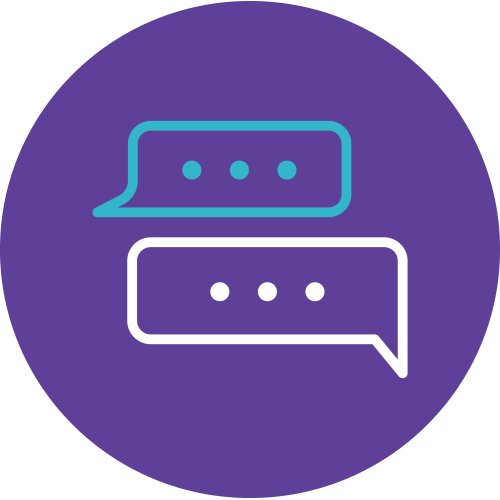Elevate Your Skills with Our MICROSOFT FABRIC ANALYTICS ENGINEER Course
Are you ready to supercharge your data analysis skills with our DP-600T00-A: Microsoft Fabric Analytics Engineer In just 4 days of engaging, instructor-led training, This course is best suited for those who have the PL-300 certification or similar expertise in using Power BI for data transformation, modeling, visualization, and sharing. Also, learners should have prior experience in building and deploying data analytics solutions at the enterprise level.
Why Choose Our MICROSOFT FABRIC ANALYTICS ENGINEER Course?
This course covers methods and practices for implementing and managing enterprise-scale data analytics solutions using Microsoft Fabric.
Course Details
Course Code: DP-600T00; Duration: 4 Days; Instructor-led
This course covers methods and practices for implementing and managing enterprise-scale data analytics solutions using Microsoft Fabric. Students will build on existing analytics experience and will learn how to use Microsoft Fabric components, including lakehouses, data warehouses, notebooks, dataflows, data pipelines, and semantic models, to create and deploy analytics assets. This course is best suited for those who have the PL-300 certification or similar expertise in using Power BI for data transformation, modeling, visualization, and sharing. Also, learners should have prior experience in building and deploying data analytics solutions at the enterprise level.
Audience
The primary audience for this course is data professionals with experience in data modeling, extraction, and analytics. DP-600 is designed for professionals who want to use Microsoft Fabric to create and deploy enterprise-scale data analytics solutions.
Prerequisites
no prerequisites
Methodology
This program will be conducted with interactive lectures, PowerPoint presentation, discussion and practical exercise.
Course Objectives
- no course objective
Outlines
Module 1: Introduction to end-to-end analytics using Microsoft Fabric
Discover how Microsoft Fabric can meet your enterprise’s analytics needs in one platform. Learn about Microsoft Fabric, how it works,
and identify how you can use it for your analytics needs.
Lesson
- Introduction
- Explore end-to-end analytics with Microsoft Fabric
- Data teams and Microsoft Fabric
- Enable and use Microsoft Fabric
- Knowledge Check
- Summary
Learning Objectives
- Describe end-to-end analytics in Microsoft Fabric
Module 2: Administer Microsoft Fabric
Microsoft Fabric is a SaaS solution for end-to-end data analytics. As an administrator, you can configure features and manage access to suit your organization’s needs.
Lesson
- Introduction
- Understand the Fabric Architecture
- Understand the Fabric administrator role
- Manage Fabric security
- Govern data in Fabric
- Knowledge check
- Summary
Learning Objectives
- Describe Fabric admin tasks
- Navigate the admin center
- Manage user access
Module 3: Ingest Data with Dataflows Gen2 in Microsoft Fabric
Data ingestion is crucial in analytics. Microsoft Fabric’s Data Factory offers Dataflows for visually creating multi-step data ingestion and transformation using Power Query Online.
Lesson
- Introduction
- Understand Dataflows Gen2 in Microsoft Fabric
- Explore Dataflows Gen2 in Microsoft Fabric
- Integrate Dataflows Gen2 and Pipelines in Microsoft Fabric
- Exercise – Create and use a Dataflow Gen2 in Microsoft Fabric
- Knowledge check
- Summary
Learning Objectives
- Describe Dataflow capabilities in Microsoft Fabric
- Create Dataflow solutions to ingest and transform data
- Include a Dataflow in a pipeline
Module 4: Ingest data with Spark and Microsoft Fabric notebooks
Discover how to use Apache Spark and Python for data ingestion into a Microsoft Fabric lakehouse. Fabric notebooks provide a scalable and systematic solution.
Lesson
- Introduction
- Connect to data with Spark
- Write data into a lakehouse
- Consider uses for ingested data
- Exercise – Ingest data with Spark and Microsoft Fabric notebooks
- Knowledge check
- Summary
Learning Objectives
- Ingest external data to Fabric lakehouses using Spark
- Configure external source authentication and optimization
- Load data into lakehouse as files or as Delta tables
Module 5: Use Data Factory pipelines in Microsoft Fabric
Microsoft Fabric includes Data Factory capabilities, including the ability to create pipelines that orchestrate data ingestion and transformation tasks.
Lesson
- Introduction
- Understand pipelines
- Use the Copy Data activity
- Use pipeline templates
- Run and monitor pipelines
- Exercise – Ingest data with a pipeline
- Knowledge check
- Summary
Learning Objectives
- Describe pipeline capabilities in Microsoft Fabric
- Use the Copy Data activity in a pipeline
- Create pipelines based on predefined templates
- Run and monitor pipelines
Module 6: Get started with lakehouses in Microsoft Fabric
Lakehouses merge data lake storage flexibility with data warehouse analytics. Microsoft Fabric offers a lakehouse solution for comprehensive analytics on a single SaaS platform.
Lesson
- Introduction
- Explore the Microsoft Fabric lakehouse
- Work with Microsoft Fabric lakehouses
- Explore and transform data in a lakehouse
- Exercise – Create and ingest data with a Microsoft Fabric lakehouse
- Knowledge check
- Summary
Learning Objectives
- Describe core features and capabilities of lakehouses in Microsoft Fabric
- Create a lakehouse
- Ingest data into files and tables in a lakehouse
- Query lakehouse tables with SQL
Module 7: Organize a Fabric lakehouse using medallion architecture design
Explore the potential of the medallion architecture design in Microsoft Fabric. Organize and transform your data across Bronze, Silver, and Gold layers of a lakehouse for optimized analytics.
Lesson
- Introduction
- Describe medallion architecture
- Implement a medallion architecture in Fabric
- Query and report on data in your Fabric lakehouse
- Considerations for managing your lakehouse
- Exercise – Organize your Fabric lakehouse using a medallion architecture
- Knowledge check
- Summary
Learning Objectives
- Describe the principles of using the medallion architecture in data management.
- Apply the medallion architecture framework within the Microsoft Fabric environment.
- Analyze data stored in the lakehouse using DirectLake in Power BI.
- Describe best practices for ensuring the security and governance of data stored in the medallion architecture.
Module 8: Use Apache Spark in Microsoft Fabric
Apache Spark is a core technology for large-scale data analytics. Microsoft Fabric provides support for Spark clusters, enabling you to analyze and process data in a Lakehouse at scale.
Lesson
- Introduction
- Prepare to use Apache Spark
- Run Spark code
- Work with data in a Spark dataframe
- Work with data using Spark SQL
- Visualize data in a Spark notebook
- Exercise – Analyze data with Apache Spark
- Knowledge check
- Summary
Learning Objectives
- Configure Spark in a Microsoft Fabric workspace
- Identify suitable scenarios for Spark notebooks and Spark jobs
- Use Spark dataframes to analyze and transform data
- Use Spark SQL to query data in tables and views
- Visualize data in a Spark notebook
Module 9: Work with Delta Lake tables in Microsoft Fabric
Tables in a Microsoft Fabric lakehouse are based on the Delta Lake storage format commonly used in Apache Spark. By using the enhanced capabilities of delta tables, you can create advanced analytics solutions.
Lesson
- Introduction
- Understand Delta Lake
- Create delta tables
- Work with delta tables in Spark
- Use delta tables with streaming data
- Exercise – Use delta tables in Apache Spark
- Knowledge check
- Summary
Learning Objectives
- Understand Delta Lake and delta tables in Microsoft Fabric
- Create and manage delta tables using Spark
- Use Spark to query and transform data in delta tables
- Use delta tables with Spark structured streaming
Module 10: Get started with data warehouses in Microsoft Fabric
Data warehouses are analytical stores built on a relational schema to support SQL queries. Microsoft Fabric enables you to create a relational data warehouse in your workspace and integrate it easily with other elements of your end-to-end analytics solution
Lesson
- Introduction
- Understand data warehouse fundamentals
- Understand data warehouses in Fabric
- Query and transform data
- Prepare data for analysis and reporting
- Secure and monitor your data warehouse
- Exercise – Analyze data in a data warehouse
- Knowledge check
- Summary
Learning Objectives
- Describe data warehouses in Fabric
- Understand a data warehouse vs a data Lakehouse
- Work with data warehouses in Fabric
- Create and manage fact tables and dimensions within a data warehouse
Module 11 Load data into a Microsoft Fabric data warehouse
Data warehouse in Microsoft Fabric is a comprehensive platform for data and analytics, featuring advanced query processing and full transactional T-SQL capabilities for easy data management and analysis.
Lesson
- Introduction
- Explore data load strategies
- Use data pipelines to load a warehouse
- Load data using T-SQL
- Load and transform data with Dataflow Gen2
- Exercise: Load data into a warehouse in Microsoft Fabric
- Knowledge check
- Summary
Learning Objectives
- Learn different strategies to load data into a data warehouse in Microsoft Fabric.
- Learn how to build a data pipeline to load a warehouse in Microsoft Fabric.
- Learn how to load data in a warehouse using T-SQL.
- Learn how to load and transform data with dataflow (Gen 2).
Module 12: Query a data warehouse in Microsoft Fabric
Data warehouse in Microsoft Fabric is a comprehensive platform for data and analytics, featuring advanced query processing and full transactional T-SQL capabilities for easy data management and analysis.
Lesson
- Introduction
- Use the SQL query editor
- Explore the visual query editor
- Use client tools to query a warehouse
- Exercise: Query a data warehouse in Microsoft Fabric
- Knowledge check
- Summary
Learning Objectives
- Use SQL query editor to query a data warehouse.
- Explore how visual
Module 13: Monitor a Microsoft Fabric data warehouse
A data warehouse is a vital component of an enterprise analytics solution. It’s important to learn how to monitor a data warehouse so you can better understand the activity that occurs in it.
Lesson
- Introduction
- Monitor capacity metrics
- Monitor current activity
- Monitor queries
- Exercise – Monitor a data warehouse in Microsoft Fabric
- Knowledge check
- Summary
Learning Objectives
- Monitor capacity unit usage with the Microsoft Fabric Capacity Metrics app.
- Monitor current activity in the data warehouse with dynamic management views.
- Monitor querying trends with query insights views.
Module 14: Understand scalability in Power BI
Scalable data models enable enterprise-scale analytics in Power BI. Implement data modeling best practices, use large dataset storage format, and practice building a star schema to design analytics solutions that can scale.
Lesson
- Introduction
- Describe the significance of scalable models
- Implement Power BI data modeling best practices
- Configure large datasets
- Exercise: Create a star schema model
- Knowledge check
- Summary
Learning Objectives
- Describe the importance of building scalable data models
- Implement Power BI data modeling best practices
- Use the Power BI large dataset storage format
Module 15: Create Power BI model relationships
Power BI model relationships form the basis of a tabular model. Define Power BI model relationships, set up relationships, recognize DAX relationship functions, and describe relationship evaluation.
Lesson
- Introduction
- Understand model relationships
- Set up relationships
- Use DAX relationship functions
- Understand relationship evaluation
- Exercise: Work with model relationships
- Knowledge check
- Summary
Learning Objectives
- Understand how model relationship work.
- Set up relationships.
- Use DAX relationship functions.
- Understand relationship evaluation.
Module 16: Use tools to optimize Power BI performance
Use tools to develop, manage, and optimize Power BI data model and DAX query performance.
Lesson
- Introduction
- Use Performance analyzer
- Troubleshoot DAX performance by using DAX Studio
- Optimize a data model by using Best Practice Analyzer
- Exercise: Use tools to optimize Power BI performance
- Knowledge check
- Summary
Learning Objectives
- Optimize queries using performance analyzer.
- Troubleshoot DAX performance using DAX Studio.
- Optimize a data model using Tabular Editor.
Module 17: Enforce Power BI model security
Enforce model security in Power BI using row-level security and object-level security.
Lesson
- Introduction
- Restrict access to Power BI model data
- Restrict access to Power BI model objects
- Apply good modeling practices
- Exercise: Enforce model security
- Knowledge check
- Summary
Learning Objectives
- Restrict access to Power BI model data with RLS.
- Restrict access to Power BI model objects with OLS.
- Apply good development practices to enforce Power BI model security.










